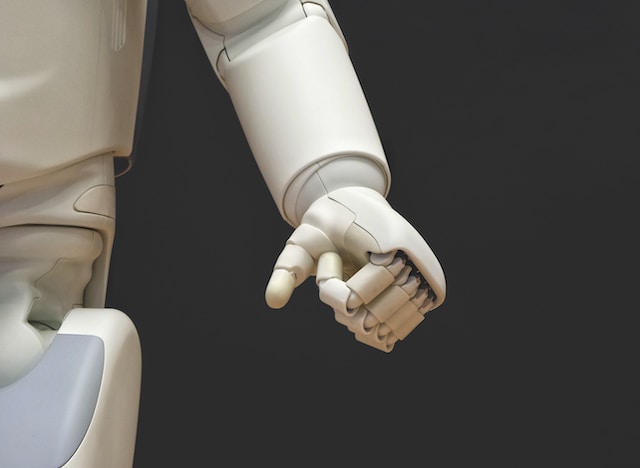Role of AI-based Approaches in Post-harvest Operations and Food Loss
In the past decade, agri-food supply chains have become more intelligent, producing and utilising vast amounts of data and transforming traditional agricultural systems. Across the world, various AI-based approaches have been used in various stages of the agricultural value chain, both on-farm and post-harvest. Further, several AI solutions have been used to ensure the quality of fresh fruit items during both the on-farm and post-harvest phases. With the utilisation of AI applications, the efficiency of these tasks can be enhanced.
This article explores various use cases that look into the application of artificial intelligence for agriculture beyond harvest, to maintain the consistency of the supply chain effectively.
Existing use cases of AI-based solutions
-
AI-based solutions to sort and grade food products
In recent years, compliance with fresh produce procedures has become crucial for the export market, particularly in Kenya. Farmers, transporters, and exporters who do not meet these procedures face the risk of being excluded from the export market. The country’s competitiveness is hampered by increasing interception rates tied to various factors such as immature crop harvesting, inadequate postharvest handling, disease and pest control, and hygiene issues. These challenges restrict access to export markets and diminish Kenya’s ability to compete with countries like Peru and Mexico in avocado exports. To address these issues and enhance agricultural practices, the use of AI approaches, including computer vision techniques, can help exporters mitigate such cases.
One application of computer vision techniques is the sorting and grading of fresh produce. For example, these techniques can automatically sort, and grade fruits and vegetables based on their size, shape, and colour as they pass through processing lines. By implementing this technology, it becomes possible to reduce food loss by ensuring that only the highest quality products are sold to consumers.
2. Transition to a circular food system for avoidable food loss
AI-based solutions can have a massive impact on the transition to a circular food system by designing avoidable food loss. Data from drones, remote sensors, satellites, and smart farm equipment provides farmers with valuable real-time information on soil, crop health, and weather conditions have been used to provide intelligence to help farmers make smarter decisions on where to grow crops, how to optimise crop rotations, and when to sow, compost, and harvest those crops. Some ag-tech solutions have been used to analyse images and determine when the fruit is ready to be picked.
3. AI for cold room remote monitoring
The integration of AI, alongside technological advancements like IoT, Cloud computing, and Blockchain, possesses the capability to revolutionise the conventional functioning of cold storage. This convergence empowers managers to make proactive decisions, resulting in enhanced operational efficiency.
By leveraging Blockchain technology, quality control measurements can be gathered through IoT devices and securely stored on a decentralized ledger accessible to all participants in the supply chain. The cooling system automatically switches ‘on’ or ‘off’ based on present conditions and set point temperatures. This implementation enhances accessibility and transparency of real-time data, enabling seamless transfer of consignment ownership with a clear and traceable chain of custody. Upon receiving a shipment, the warehouse can verify its blockchain record to identify any temperature anomalies, allowing the quality control team to take appropriate actions. Once the warehouse accepts the produce, they assume responsibility, facilitating the identification of individual accountabilities throughout the cold chain and expediting claim settlements.

4. Fruit maturity assessment.
Sorting fresh produce involves considering various factors such as ripeness, quality, decay, disease, and injury. On-farm sorting is labour-intensive and often leads to low productivity due to human fatigue. Moreover, the subjective experience of inspectors can introduce bias, resulting in inconsistent product quality and failure to meet standards. To address these issues, recent studies have focused on employing AI models in on-farm sorting. These models primarily encompass maturity assessment, quality identification, injury detection, and the detection of decay and disease in fruits like apples, mangoes, and blueberries. In highly modernised farms, AI systems have been implemented to replace human workers, effectively addressing issues of visual variation, inaccuracy, and fatigue in the grading process.
5. Applications of AI for on-farm transportation
In the conventional manual picking method, pickers spend a significant amount of time walking back and forth to transport full containers like trays and bags to the collection centre and returning with empty containers to continue picking. This repetitive task of carrying heavy loads and engaging in upper body activities puts workers at risk of musculoskeletal problems. To tackle the challenges of labour costs, low efficiency in harvesting, and occupational injuries, harvesting aids such as on-farm transportation co-robots have been introduced in high-grade processing facilities, for the harvesting of apples, strawberries, and grapes. Overall, their purpose is to enhance productivity, ensure safety, and improve the overall efficiency of operations.
6. AI for linking postharvest quality to pre-harvest conditions
During the postharvest storage of fruits, the occurrence of storage diseases and disorders, such as superficial scalding in pome fruit, tends to increase. Additionally, the quality attributes of the fruits change. In developed countries, the majority of fruits and vegetables are sorted and graded online just before they are sold commercially. These sorting and grading systems generate a continuous stream of data on the quality attributes of the produce, which is currently not fully utilized. AI techniques can be employed to identify patterns in these attribute changes throughout the storage season.
This information can then be utilised as an early warning system for managers of cool stores. For instance, the susceptibility of pome fruit to superficial scald, a storage disorder that causes brown discolouration of the fruit’s skin, varies between seasons and is challenging to predict at the time of harvest. An AI-based decision support system can provide recommendations for the timely commercialisation of susceptible fruits by monitoring the progression of superficial scald throughout the storage season using data from sorting lines, ultimately cutting down on post-harvest loss.
In conclusion
AI technologies are becoming more prevalent in automating post-harvest operations and reducing food loss for agribusinesses. These solutions have demonstrated their usefulness and effectiveness in recent years, offering further potential and opportunities. Considering the swift progress of AI technologies, it is foreseeable that their utilisation in on-farm sorting, remote monitoring of cold rooms, and transportation will become widely adopted in precision agriculture in the coming years.



